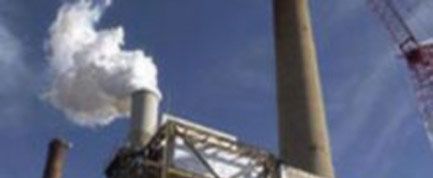Feds: Storing Carbon Dioxide Underground Can Work

Coal seams deep below the ground could be used to store carbon dioxide released by human activities, government scientists have found.
The process could have side-effects, some good and some bad.
When carbon dioxide is pumped into the coal, it may also displace the methane the coal contains, which could be used by industry.
Storing carbon dioxide in coal seams is just one potential method of carbon sequestration being explored by scientists. Researchers are also looking into pumping the greenhouse gas into oil wells to extract the last few drops of oil or in brine aquifers.
Once injected into these deep underground formations, the carbon could potentially be stored indefinitely.
Researchers with the U.S. Department of Energy’s National Energy Technology Laboratory have built a lab that mimics the pressures, temperatures and other stresses that deep coal seams are subjected to, in order to conduct realistic experiments of carbon dioxide injection. The idea is to inject the carbon into seams that are not useful for coal mining. The new study adds weight to another recent study suggesting that the process could work.
The team also looked at possible side-effects of carbon sequestration in coal mines. They found that some toxic metals trapped in the coal were released and could contaminate the water used in the process.
Sign up for the Live Science daily newsletter now
Get the world’s most fascinating discoveries delivered straight to your inbox.
“Changes in water chemistry and the potential for mobilizing toxic trace elements from coal beds are potentially important factors to be considered when evaluating deep, unmineable coal seams for CO2 sequestration, though it is also possible that, considering the depth of the injection, that such effects might be harmless,” the researchers said in a prepared statement.
They estimate that worldwide, there is the storage capacity for almost 3 trillion tonnes (or 3,000 trillion kilograms) of carbon dioxide.
- 10 Ways to Green Your Spending
- Top 10 Emerging Environmental Technologies
- What's Your Environmental Footprint?

Andrea Thompson is an associate editor at Scientific American, where she covers sustainability, energy and the environment. Prior to that, she was a senior writer covering climate science at Climate Central and a reporter and editor at Live Science, where she primarily covered Earth science and the environment. She holds a graduate degree in science health and environmental reporting from New York University, as well as a bachelor of science and and masters of science in atmospheric chemistry from the Georgia Institute of Technology.











